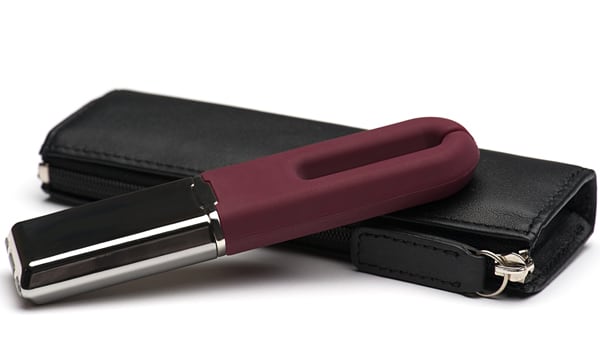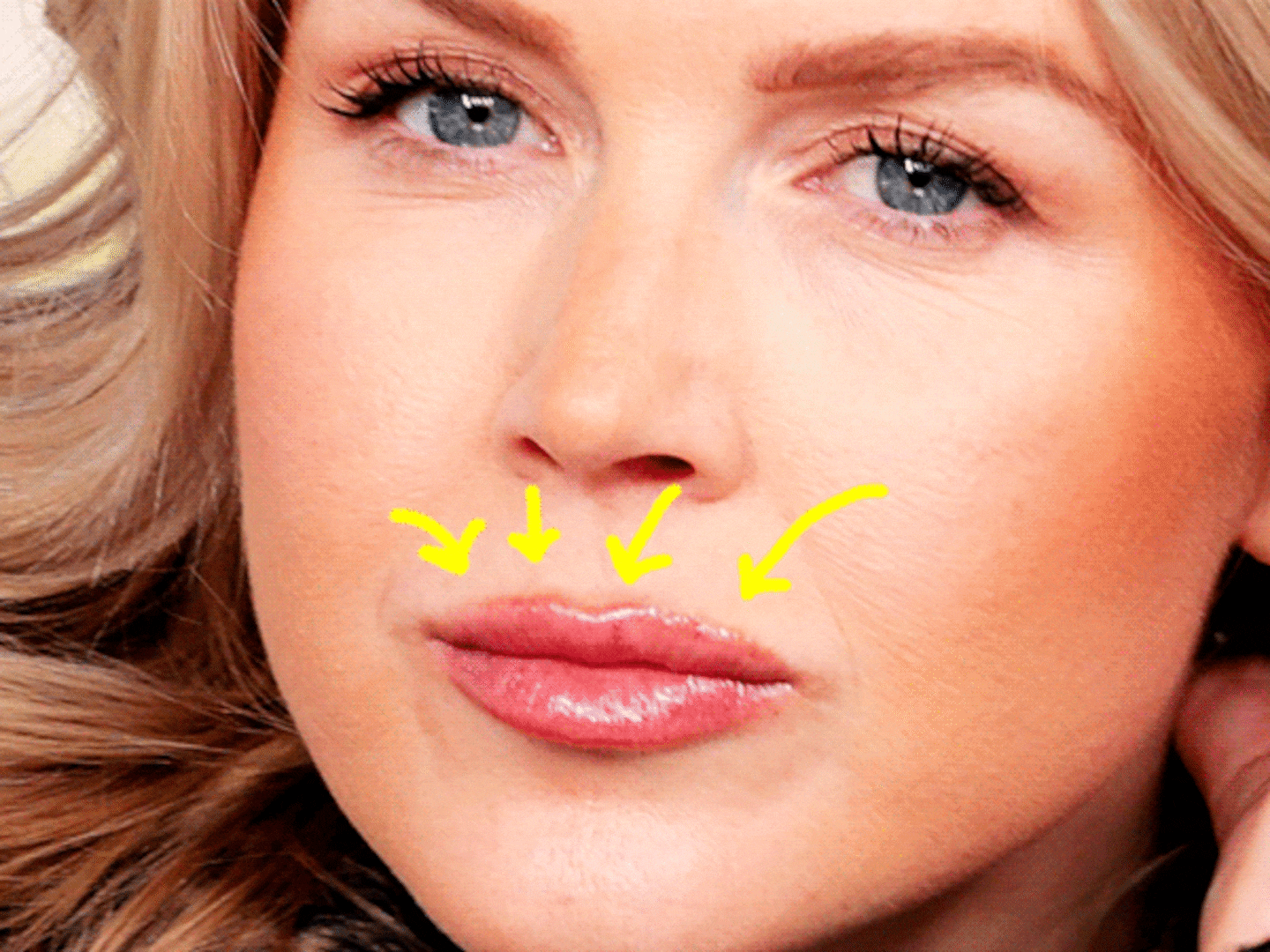Is this a vibrator before me? About the length of my palm, the device is half black silicon, half metal. It looks like a hipster’s vision of a tuning fork, and you wouldn’t blink at seeing it in a Plexiglas case at the Museum of Modern Art. Push the tiny start button on the metal side, and it discreetly murmurs its promise.
Ordinarily, I might feel a bit shy examining a sex toy in the middle of a packed restaurant, but that’s the beauty of the Duet, a sleek new device that its creators hope will do for vibrators what the iPod did for portable music devices. Sitting in Greenwich Village’s Café Reggio, Michael Topolovac and Ti Chang, business partners who've created the device, tell me about their quest to create the perfect adult plaything.
Released last month, after about a year and a half of research, which included in-home interviews with 60 women and a survey of more than 1,000 women, the Duet is the latest arrival to the world of designer vibrators, in which a focus on boutique styling and engineering quality is encouraging the social acceptance of a product once snickered at.
For a price tag of $149 at Babeland, a national sex-toy chain, and Good Vibrations in San Francisco, the Duet isn’t battery powered, like old-school vibrators, but charges via USB connection. And in a few weeks, Topolovac and Chang will be releasing two pricier models: one with a gold-plated band for $189 and another with a gold-plated body and band for $349, which hold 8 and 16 gigabytes of data, respectively. The storage wasn’t a part of the original design, but came from the first group of test users, about half of whom mentioned wanting to store erotic content; others want the extra storage for whatever.

How do Topolovac and Chang hope to differentiate their device? “In terms of the Duet making a splash, it is not about how we can or will do compared to the few other luxury brands, but how do we help lead a movement that elevates this space out the lowbrow place it usually sits,” Topolovac told The Daily Beast. “It feels a bit like we have come to realize that women desire high-quality shoes, but the bulk of their options are flip-flops at K-Mart.”
Other companies in the luxury sex-toy business include Jimmyjane, whose latest Form series ($145 to $185) are made of medical-grade silicon and look like they might have been designed by the sculptor Henry Moore. There’s also Lelo, a Swedish company whose Tiani ($159), a small, C-shaped device with a vibrating motor on one end, can be controlled from up to 39 feet way with a palm-sized remote control. And We-Vibe 3 ($139), another C-shaped gadget, with tiny vibrating motors on both ends, and designed especially for couples to use together.
Topolovac, 45, a product-design engineer, and Chang, 32, an industrial designer, met in the summer of 2010 at a sex-toy trade show in Ft. Lauderdale, Fla. Topolovac had two startups under his belt—Light and Motion, which makes underwater cameras and bicycle lights, and Arena, which makes cloud-computing software for managing product data. Chang owned Incoqnito, a line of jewelry she designed that doubles as sex toys. “We both saw it as a really, really compelling business, and decided to risk the stigma of it all and work to build an elevated brand in the space,” said Topolovac, who invited Chang to help him create the Duet.
Similar to the iconic Apple product, in creating the Duet, Topolovac and Chang put a premium on user experience. “Apple understood that [their device] was about how people discover their music, how they share it, how they take it with them, how they configure it,” said Topolovac. “How they can have this ubiquitous, beautiful interaction with their music at all these different touch points in their lives.”
With the Duet, “it’s not just about an orgasm,” he said. “It’s about ‘How do I feel when I buy this object?' ‘How does it come to me?' ‘How do I travel when with it?' ‘How do I feel when I touch it?' It’s about the larger experience that touches sexuality. And that’s how we’ve tried to look at this brand. Not like, ‘Here’s the perfect widget.’ ”
One of the first things Topolovac and Chang did when they joined forces was conduct a series of casual conversations with dozens of women, ranging mostly from their mid-20s to mid-50s. The pair asked about sexuality and relationships—but not specifically what women want in a sex toy. They asked what these women’s average day looked like, what their sexual goals were and other open-ended questions. From these chats they developed a survey to get deeper insights across a larger group, and this cross-pollination informed the creation of the Duet.
“The USB platform came not because women said, ‘Make me a USB-rechargeable vibrator,’ but because they said they wanted to eliminate the hassle of cords and batteries,” said Topolovac.
Of course, some of the stories were sex-toy specific. One woman described being stopped on two separate occasions before her plane was about to take off because of a “noise emanating from her bag.” As three stewardesses surrounded the woman and opened her luggage, she took out her vibrator—flipped on by the jostle of travel—and sheepishly turned it off.
(She’s not alone in her sex-toy travel nightmares: the blogosphere lit up last October when Jill Filipovic, a feminist blogger, discovered a note from the TSA in her checked luggage telling her to “get [her] freak on,” in response to a “personal item.”)
“Oftentimes, vibrators were something [women] wanted to be discreet, something in their life, but … not something that would scream ‘sex toy’!” said Chang. “So it evolved in form away from the cartoony, rounded, phallic type of objects. I went the other way, to clean and modern. At the same time, because it would be used for external stimulation, I went with flat surfaces rather than cylindrical.”
Chang used silicon and metal because she wanted her device to be touch-friendly, yet allude to jewelry. “Jewelry is something women buy to splurge on themselves and feel good,” she said. “It makes them feel beautiful. And when you think of jewelry, you think of things that are precious and enduring.” Plastic, she said, conveys the opposite message.
Vibrators have come a long way since the ungainly “Manipulator,” an early vibrator, patented in 1869 and 1872. In an interview, Rachel P. Maines, author of The Technology of Orgasm, said the steam-powered contraption was not a sexual device but, according to the patent, invented for “pelvic massage,” to sooth “female complaints.” It featured “a padded table with a cutout for the lower abdomen, in which a vibrating sphere ... massaged the pelvic area,” wrote Maines in her book, where she added that the machine’s inventor, George Taylor, warned doctors that his device should be used under supervision “to prevent overindulgence.”
The first electric vibrators later in the 19th century appeared in medical- and electrical-supply shops and were used primarily by doctors to treat "hysteria" in women. By the early part of the 20th century, they were being sold for home use—though not overtly advertised as sex aids, but as devices to improve blood circulation to promote general health. Over time, vibrators found their way into adult bookstores, usually tawdry establishments that weren’t women-friendly, which meant they were targeted to men to take home to their girlfriends and wives.
The opening of Good Vibrations, a woman-owned sex-toy retailer founded in 1977 in San Francisco, is believed to be the first clean, well-lit, and comfortable place for women and couples to shop for sex-related items. “It was a remarkable change that shifted consumer behavior,” said Debby Herbenick, Ph.D., a sex researcher and educator at Indiana University and author of Great in Bed. As sex-toy retailers moved online, women purchased vibrators in enormously greater numbers.
Today, vibrators are becoming mainstream. They can be purchased not only at boutique erotic accessory shops, in-home sex-toy parties, and the Internet, but cheaper ones can now be found in the aisles of Walgreens and Duane Reade, where, as The New York Times recently reported, you can pick up Mr./Ms. Feelgood while shopping for Band-Aids and Vick’s VapoRub. They’ve also been buzzing their way into entertainment media, including the upcoming film Hysteria, billed as a romantic comedy about the invention of the vibrator, and starring Maggie Gyllenhaal.
In the weeks since its release, the Duet seems to be reaping the benefits of this shift. “We have been doing all we can to catch up to … demand and all the orders we are getting,” said Topolvac.
“When you tell someone what you do, it's like women have been waiting to have a smart conversation about sex toys for the past 10 years,” Topolovac said about the hundreds of women he and Chang have talked to in passing since they started their business. “The next thing you know, they're sharing all these stories with you. They're telling you what's wrong with this or that, or could you solve this problem, or what if you did this … [Women want] smarter products and smarter conversations around these products, and it's almost like we're just conduits for that."






